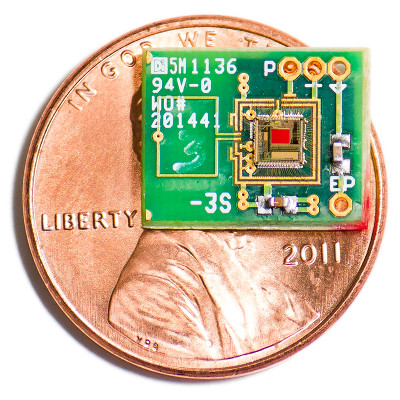MTI has created an implant that uses an ear snail instead of a battery.
 The snail is a part of the inner ear in the form of a spiral divided into cavities. Inside the cavities contain liquids with a high concentration of sodium and potassium ions, which create an electrical potential at the membrane separating the cavity when sound vibrations are transmitted to the cochlea. Scientists from the joint team of the Massachusetts Institute of Technology, the Massachusetts Eye and Ear Clinic, and Harvard University were able to use this potential to provide power for the microelectronic device without disturbing the patient’s hearing.
The snail is a part of the inner ear in the form of a spiral divided into cavities. Inside the cavities contain liquids with a high concentration of sodium and potassium ions, which create an electrical potential at the membrane separating the cavity when sound vibrations are transmitted to the cochlea. Scientists from the joint team of the Massachusetts Institute of Technology, the Massachusetts Eye and Ear Clinic, and Harvard University were able to use this potential to provide power for the microelectronic device without disturbing the patient’s hearing.Such implants can be used to monitor the condition of the ear and treat hearing loss or vestibular apparatus. The need to exclude the possibility of the implant's influence on hearing imposes very severe restrictions on the power consumption of the device - the implant can use only a tiny fraction of the energy of an already not too powerful “battery”. Therefore, it uses extraordinary technical solutions.
The implant contains a radio transmitter to transmit the collected data for processing. It is impossible to power it directly from the cochlea membrane: neither voltage nor power is enough. To get around this limitation, a “power supply unit” is used, which gradually charges the capacitor. This process takes from 40 seconds to 4 minutes. When enough energy has been accumulated, the device communicates by broadcasting a packet of data collected during this time.
Another problem is not only the transmitter, but the implant electronics as a whole are not enough for the normal operation of the voltage that the snail gives out. If the capacitor is discharged below a certain limit, the device will not be able to start up on its own. Therefore, for the “cold start” an external RF pulse is used.
')
“We have been aware for 60 years of the existence of a biological battery in the inner ear and its role for human hearing, but so far no one has tried to use its energy to power electronic devices,” says Konstantin Stankovic, an otolaryngologist surgeon at the Eye and Ear Clinic.
Scientists conducted a series of experiments on guinea pigs, during which electrodes were implanted on both sides of the membrane in the inner ear of animals. The devices themselves, powered by them, were outside, but their dimensions allow them to be placed in the cavities of a person’s middle ear. No hearing loss in guinea pigs in the process of implants has been identified.
Source: MIT .
Source: https://habr.com/ru/post/157909/
All Articles